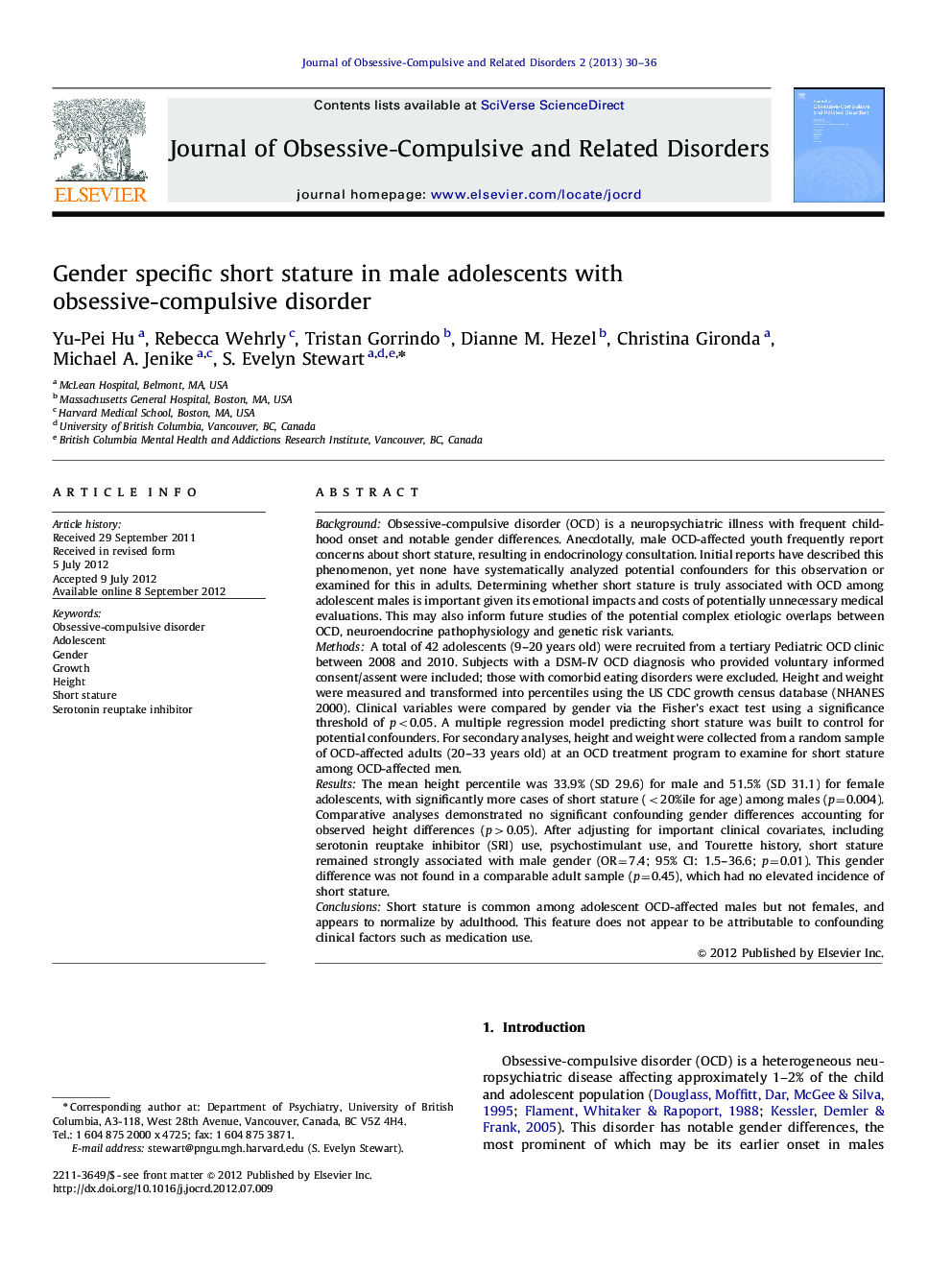| Article ID | Journal | Published Year | Pages | File Type |
|---|---|---|---|---|
| 912308 | Journal of Obsessive-Compulsive and Related Disorders | 2013 | 7 Pages |
BackgroundObsessive-compulsive disorder (OCD) is a neuropsychiatric illness with frequent childhood onset and notable gender differences. Anecdotally, male OCD-affected youth frequently report concerns about short stature, resulting in endocrinology consultation. Initial reports have described this phenomenon, yet none have systematically analyzed potential confounders for this observation or examined for this in adults. Determining whether short stature is truly associated with OCD among adolescent males is important given its emotional impacts and costs of potentially unnecessary medical evaluations. This may also inform future studies of the potential complex etiologic overlaps between OCD, neuroendocrine pathophysiology and genetic risk variants.MethodsA total of 42 adolescents (9–20 years old) were recruited from a tertiary Pediatric OCD clinic between 2008 and 2010. Subjects with a DSM-IV OCD diagnosis who provided voluntary informed consent/assent were included; those with comorbid eating disorders were excluded. Height and weight were measured and transformed into percentiles using the US CDC growth census database (NHANES 2000). Clinical variables were compared by gender via the Fisher's exact test using a significance threshold of p<0.05. A multiple regression model predicting short stature was built to control for potential confounders. For secondary analyses, height and weight were collected from a random sample of OCD-affected adults (20–33 years old) at an OCD treatment program to examine for short stature among OCD-affected men.ResultsThe mean height percentile was 33.9% (SD 29.6) for male and 51.5% (SD 31.1) for female adolescents, with significantly more cases of short stature (<20%ile for age) among males (p=0.004). Comparative analyses demonstrated no significant confounding gender differences accounting for observed height differences (p>0.05). After adjusting for important clinical covariates, including serotonin reuptake inhibitor (SRI) use, psychostimulant use, and Tourette history, short stature remained strongly associated with male gender (OR=7.4; 95% CI: 1.5–36.6; p=0.01). This gender difference was not found in a comparable adult sample (p=0.45), which had no elevated incidence of short stature.ConclusionsShort stature is common among adolescent OCD-affected males but not females, and appears to normalize by adulthood. This feature does not appear to be attributable to confounding clinical factors such as medication use.
► Male OCD-affected adolescents are at risk for short stature ► Female OCD-affected adolescents have normal height ► Height in OCD-affected males appears to normalize by adulthood.
